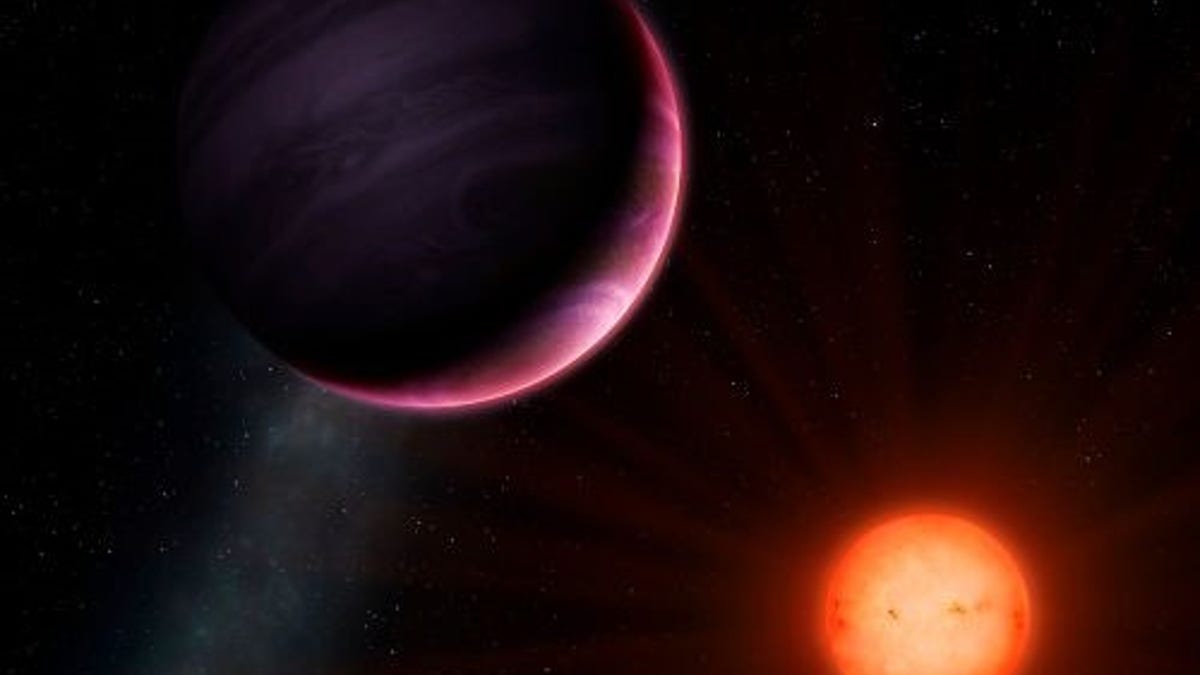Discovery of 'monster planet' stuns scientists
Astronomers have discovered a planet the size of Jupiter orbiting a star that's only half the size of the sun, contradicting theories that a star so small could form a planet so large.
Astronomers have discovered a planet the size of Jupiter orbiting a star that’s only half the size of the sun — a celestial phenomenon that contradicts theories of planet formation.
NGTS-1b, a massive, 986-degrees-hot ball of gas revolving around a red M-dwarf star 600 light years from Earth, is the largest planet compared to the size of its star ever found.
The discovery contradicts theories that a star so small could form a planet so large. Scientists previously theorized that small stars could form rocky planets, but they did not gather enough material to form planets the size of Jupiter.
STARGZERS FIND TWENTY NEW EARTH-LIKE PLANETS THAT COULD HOST LIFE
As red M-dwarf stars are the most common type in the universe, scientists now believe there may be many more planets like this.

Artist's impression of planet NGTS-1b with its neighbouring sun (credit University of Warwick/Mark Garlick)
NGTS-1b was spotted by an international collaboration of researchers using the Next-Generation Transit Survey (NGTS) facility in Chile, according to a report from the University of Warwick.
It is about 2.8 million miles away from its star — only 3 percent of the 93-million-mile distance between Earth and the sun. A year on NGTS-1b — the time it takes to revolve around its star — occurs every 2.6 Earth days.
NASA RELEASES EERIE PLAYLIST OF SPELLBINDING SPACE SOUNDS
"The discovery of NGTS-1b was a complete surprise to us. Such massive planets were not thought to exist around such small stars,” said the lead author of the research, Dr. Daniel Bayliss of the University of Warwick’s Astronomy and Astrophysics Group. “This is the first exoplanet we have found with our new NGTS facility, and we are already challenging the received wisdom of how planets form.”
“NGTS-1b was difficult to find, despite being a monster of a planet, because its parent star is small and faint,” said Warwick Professor Peter Wheatley. “Small stars are actually the most common in the universe, so it is possible that there are many of these giant planets waiting to found.
“Having worked for almost a decade to develop the NGTS telescope array, it is thrilling to see it picking out new and unexpected types of planets. I'm looking forward to seeing what other kinds of exciting new planets we can turn up.”
SUNSCREEN 'SNOW' FALLS ON SCORCHING-HOT ALIEN PLANET
The astronomers’ report, ‘NGTS-1b: a hot Jupiter transiting an M-dwarf’, will be published in the Monthly Notices of the Royal Astronomical Society.

